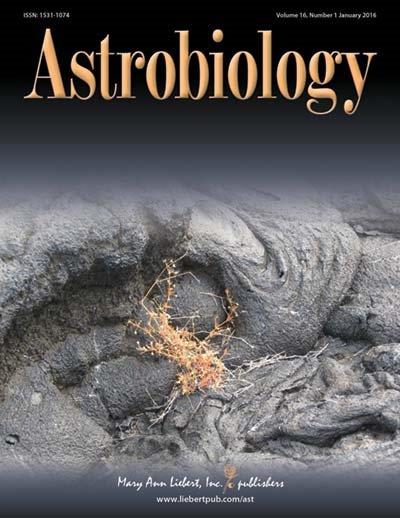For Immediate Release
New Simulation Study Challenges Jupiter's Role as Planetary Shield, Protecting Earth from Comet Impacts
Contact: Kathryn Ryan
914-740-2250
kryan@liebertpub.com

New Rochelle, February 3, 2016—Not only is the "Jupiter as shield" concept, implying that the planet shields Earth from comet impacts, not true, but perhaps Jupiter's most important role in fostering the development of life on Earth was just the opposite -- delivering the volatile materials from the outer Solar System needed for life to form. This new simulation study, and the previously underestimated role that Saturn may have also played in the evolution of life on Earth, are presented in an original research article published in Astrobiology, a peer-reviewed journal from Mary Ann Liebert, Inc., publishers. The article is available free for download on the Astrobiology website until March 3, 2016.
In "Jupiter: Cosmic Jekyll and Hyde," Kevin Grazier, PhD, at the NASA Jet Propulsion Laboratory in Pasadena, describes the study in which he simulated the evolution of tens of thousands of particles in the gaps between the jovian planets for up to 100 million years. Based on the results, Dr. Grazier concludes that the widely reported shield role attributed to Jupiter is incorrect. The simulations showed that Jupiter teams with Saturn to kick a significant fraction of the particles into the inner Solar System and into orbits that cross Earth's path. He proposes that a Solar System with one or more planets similar to Jupiter located beyond the region of potential terrestrial planets is beneficial for the development of life.
“In an unprecedented effort to solve the riddle as to whether jovian bodies shield habitable planets from impacts catastrophic to life, Dr. Grazier presents a modeling study that speaks to the incredible complexity of planetisimal evolution in the Solar System,” says Sherry L. Cady, PhD, Editor-in-Chief of Astrobiology and a Chief Scientist at the Pacific Northwest National Laboratory. “In this paper, we learn that the overly simplistic 'Jupiter as shield' concept is a thing of the past, and future research in this area will require the continued use of the kinds of robust simulation strategies so effectively employed in Dr. Grazier’s work.”
About the Journal
Astrobiology, led by Editor-in-Chief Sherry L. Cady, a Chief Scientist at the Pacific Northwest National Laboratory, and a prominent international editorial board comprised of esteemed scientists in the field, is the authoritative peer-reviewed journal for the most up-to-date information and perspectives on exciting new research findings and discoveries emanating from interplanetary exploration and terrestrial field and laboratory research programs. The Journal is published monthly online with open access options and in print. Complete tables of content and a sample issue may be viewed on the Astrobiology website.
About the Publisher
Mary Ann Liebert, Inc., publishers is a privately held, fully integrated media company known for establishing authoritative peer-reviewed journals in many promising areas of science and biomedical research, including New Space and High Altitude Medicine & Biology. Its biotechnology trade magazine, Genetic Engineering & Biotechnology News (GEN), was the first in its field and is today the industry’s most widely read publication worldwide. A complete list of the firm’s 80 journals, books, and newsmagazines is available at the Mary Ann Liebert, Inc., publishers website.